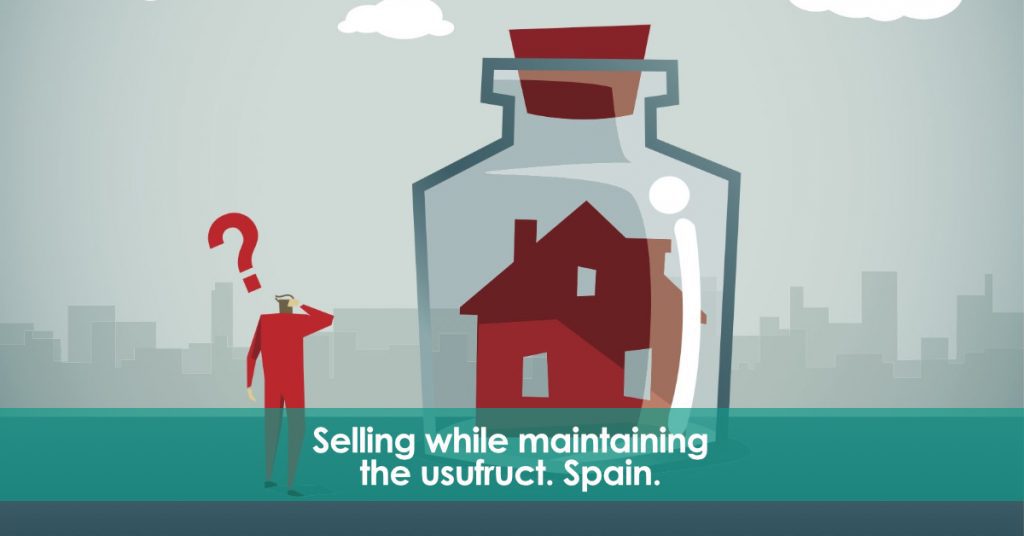Selling a property but keeping the usufruct, is an operation that has increased considerably in recent years. Especially among elderly people, who are looking to supplement their pensions, without changing their home. In this week’s article we will clarify the main differences between the two sides of the same coin: bare ownership and usufruct. And we will explain the main advantages of opting for this progressively common formula: selling while maintaining the usufruct.
Full ownership, bare ownership, usufruct. What does each one of them consist of?.
The bare ownership is the right that someone has over an asset that he/she owns but cannot use or enjoy. In other words, it is an “incomplete” right. This means that the bare owner can sell the property, place a mortgage in it, carry out works and improvements, is also obliged to pay taxes, the community fees, etc. However, he/she is deprived of the use and enjoyment of the property, which is transferred to another person.
The usufruct is regulated in 467 et seq. of the Civil Code and consists of the: “enjoyment of another’s property with the obligation to preserve its form and substance, unless the title of its constitution or the law authorises otherwise”. The usufructuary is the opposite side of the bare owner. He has the right to benefit, use and enjoy the property; but he/she is not the owner.
The so-called “full ownership” is the situation in which one person has complete control of a property. It is the union of both the usufruct and the bare ownership. It occurs when a person is the legitimate owner of a property and, at the same time, has its use and enjoyment.
How is the usufruct for life calculated?.
If you have a property and you want to sell it and keep the usufruct for life, the first step is to calculate the value of the usufruct. The calculation is very simple and consists of the following formula: Usufruct = 89 – age of the usufructuary.
Let us look at an example. If a person is 77 years old, the value of the usufruct for life would be 89 – 77 = 12%. In other words, if the property has a value of 300.000€; the usufruct for life would be 12% of 300.000€, i.e. 36.000€.
Sale of the bare property with reservation of the usufruct: How? When? Why?.
If you own a property and you want to sell it while keeping the usufruct, there are several ways to do it.
-Sale in exchange for a price.
One option would be the sale with payment when signing the deed of sale. In other words, the person who sells the bare ownership, maintaining the usufruct, receives a payment for the transferred right. The purchasers would pay, in the Valencian Community, 10% of the Transfer Tax. The seller would be responsible for the payment of the Municipal Plusvalía and the Capital Gains Tax (unless he is over 65 years old and is transferring his habitual residence, etc.). It would also be possible to sell with deferred payment. This payment could be guaranteed with a mortgage, with a resolutory condition, etc.
– Life annuity or Lifetime payment.
The second option is the annuity. In other words, the owner and seller would become the usufructuary, in exchange for a lifetime payment (that would take place, generally, on a monthly basis). In this case, taxation will be different depending on the age of the beneficiary. As in the previous case, Transfer Tax would be paid, but it could also be subject to Gift Tax. Everything will depend on the amount of the lifetime payment, the age of the beneficiary, etc.
Conclusions.
If you own a property and you are considering selling while maintaining the usufruct, please do not hesitate to contact us. We will study your case, and offer you expert advice, the possibility of agreeing a lifetime payment or annuity, etc.
The information provided in this article is not intended to be legal advice, but merely conveys information related to legal issues.
Carlos Baos (Lawyer)
White & Baos.
Tel: +34 966 426 185
E-mail: info@white-baos.com
White & Baos 2023 – All Rights Reserved.

I am the legal Userfructa living in the house, and my friend is the bare owner. We have fallen out and he wants me out so he can sell the property. I have told him he will have to sell the property with me attached, but he’s having none of it.
I am 68 and have nowhere else to go. The house is worth about 180,000. What can I do, and what would the owner gain if they sell this place to an investor?
As you can imagine, I am very concerned. The owner is 75 and would like to move on, but he “wants his money” And thinks “he will lose out if I am still here”
If I refuse to go will I have to pay him something? Thank you for listening.